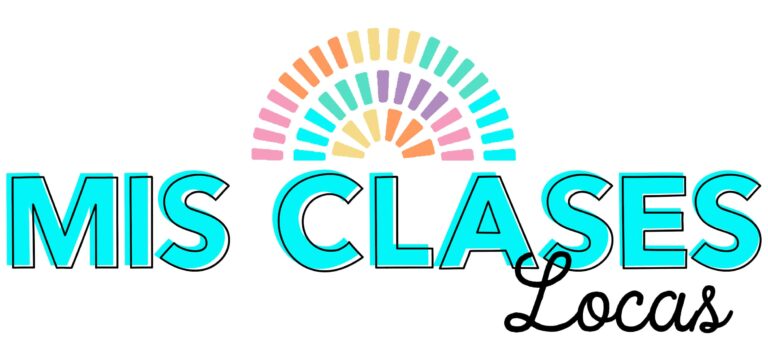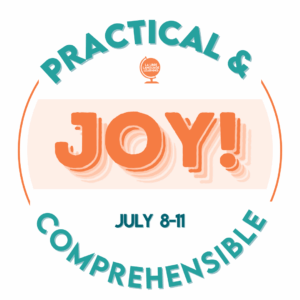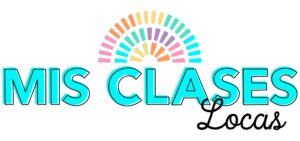Inside: Differentiation in Spanish class can be a challenge, as each student will have different levels of proficiency and understanding. In a world where schools are becoming increasingly diverse, it is especially important to be aware of students’ individual needs and create an environment that encourages learning at all levels. To ensure that all students are getting the most out of Spanish class, it’s important to differentiate instruction.
Author – Allison Wienhold
Published January 23, 2023 & most recently updated on March 9th, 2025
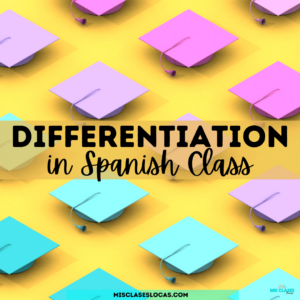
NEW in 2025! Neurodiversity Teacher Summit
On March 25th, 2025 I will be doing a masterclass all about Differentiation to support all learners.
Learn more in the new Neurodiversity Summit Blog Post.

What is differentiated instruction for students in Spanish class?
Differentiation is the practice of tailoring instruction to meet students’ individual needs. As a Spanish teacher, you have the added challenge of teaching a new language to students who have a variety of ability levels in Spanish and English or their home language. Differentiation in Spanish class might mean having Heritage Spanish speakers mixed in with novice Spanish students, as well as special education accommodations, and talented and gifted students. If you teach many levels, make sure to also check out Sustainable Spanish Lesson Planning.
Why differentiation in Spanish class is important
Differentiation to me means meeting all students where they are and helping to build their Spanish proficiency. In my experience at previous schools, differentiated instruction to many people meant following the IEP guidelines and providing the accommodations listed. One problem for Spanish 1 was there had never been any established strategies set up for second language acquisition, as it was a brand new class and skill. I could get ideas from existing reading accommodations, but all in a new language might require tweaking to fit the new situation.
What differentiation is and is not in Spanish class
Differentiated instruction is beyond just providing accommodations and modifications for diagnosed special education students. There are SO many students in every class you teach that have some kind of undiagnosed learning difficulty, mental health struggle, autism spectrum, and difficult home life situation beyond the sheet you are given at the start of the year.
Differentiation also includes providing extensions and opportunities for growth for both gifted and Heritage Spanish learners. Every school I have taught in rural Iowa has SEVERLY underserved the talented and gifted population. To put what I mean into perspective there were zero instructors and dollars spent for gifted high school students. There were also zero honors classes, AP, IB, or any kind of advanced option besides taking (easier than high school) online classes through the community college. Spanish 3&4 was the only advanced class offered.
Differentiation in Spanish Class Examples
Here are some tips and tricks for making your Spanish classroom more inclusive and reaching all learners through differentiated instruction.
Set Clear Expectations
No matter what level of Spanish your students are at, it is essential to set clear expectations. I post and discuss Interpersonal Speaking Skills at the start of the year. You can read more about them and get the posters in this blog post. It is helpful when everyone understands the expectations and goals of Spanish class and what they need to do in order to succeed. (Spoiler – listen, read and communicate in Spanish, with a positive attitude, and respect for all people). My syllabus and guardian newsletter also make sure that everyone is on the same page.
Visual Aids for Differentiating in Spanish Class
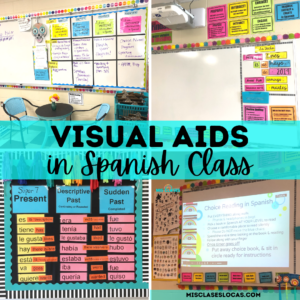
Visual aids can also be used to differentiate instruction in the Spanish classroom. As a very visual learner myself, I have a hard time learning from a presenter who only talks with no visuals. In my classes, visual aids included posters with a purpose that stayed up all year (even during assessments) including:
- I can statement with daily lesson plans posted (top left picture)
- Super 7 Verbs Posters (bottom left picture)
- Interpersonal Speaking Skills Posters & Expectations (top right picture)
- Attention Getters (bottom left picture under the board)
- Posted class routines let students know what to do when they enter class. (bottom left picture)
- Posted current vocab structures on the board (in both English & Spanish)
- Other word walls, helpful phrases in Spanish
- Daily Slideshows with explicit instructions of what to do during an activity, with support, as well as what to do once you are finished for optional extensions.
- Leaving up current content on the whiteboard to use as a reference.

Routines to Support all Students – Daily & Weekly
Predictable routines support those with anxiety, those on the spectrum, and those who thrive with stability. I share a lot more about this in my classroom routines blog post. Daily bell ringers give you a chance to check in with specific students, while other students have a task to complete. I have a full set of routines for every day of the school year if you are interested. Or you can get a sample week of my classroom routines below to help with differentiation in Spanish class.
Create Levels of Difficulty
One way to differentiate speaking activities in Spanish is by creating different levels of difficulty. This means assessing each student’s proficiency level and assigning activities accordingly. (The Proficiency Puzzle is a great way to learn about proficiency levels if you need a refresher). If you have a very wide range of proficiency levels, especially with a mix of novice students and Heritage learners, you could do flexible groupings. These groups might have slightly different tasks for the same topic.
For example during Weekend Chat, you could have different tasks happening. Novice students could be given basic tasks like describing a picture or answering simple questions about their weekend with a chat mat. Or they could move to the side of the room based on whether they did an activity or not using these Weekend Chat Slides. Intermediate students could respond to an opinion statement (Ex. The principal said we should play a game at 7 am Saturday), elaborate on their weekend in an open-ended format, or debate a topic (Ex. should there be a curfew on the weekend).
Create Flexible Groups

Beyond the temporary flexible groups mentioned above for a class starter or activity like Weekend Chat, you could group students for an entire unit. One way to differentiate instruction is by grouping students according to their level of knowledge or understanding. You could group them based on language proficiency or the support needed. This allows different activities for each group while still teaching the same material. Additionally, it allows students with similar skill levels to learn from each other and build confidence in their abilities as they collaborate. Below are two in-depth blog posts which show how to read novels in different groups.
- Upper-Level Spanish Literature Circles (a few different novels at the same time in groups)
Modifications and Accommodations
Another way you can provide differentiation in Spanish class instruction is by providing modifications or accommodations to students who may need extra support. As a reminder, special education IEPs and 504 plans include accommodations that the Law requires. I am not referring to changing those modifications, but rather providing differentiation for every student to help them succeed.
Movie Accommodation Examples
- Provide subtitles that are appropriate to the class level (See 15 Appropriate movies for Spanish class & Turning on the English Subtitles for more information about choosing subtitles).
- Front-load the vocabulary and characters so students are prepared and better understand the film.
- Pick between Spanish or English questions during the film depending on the goals & edit how many questions if needed to overwhelm students.
Weekend Chat Find Someone Who Accommodation Example
All my Find Someone Who speaking activities include differentiated options. You could give students options and the choice to be more supported or to have more of a challenge. This means you could use the same Weekend Chat activity across multiple levels. Or you could even provide differentiated options within the same class.
- For speaking questions with and without the yo form sentence starter. Allow Heritage or advanced students to answer spontaneously. Students who need more support can start the sentence and answer instead of giving up that it is too hard.
- For writing sentence starters, a word bank, or free write depending on the student’s level. Students who need the most support have the verb to start the sentence and fill in the rest. Those up for more of a challenge pick the correct verb from a word bank. Those who are up for a challenge, write.
Additionally, the modifications can go beyond the worksheet itself. Using the same activity as an example, a student with mobility challenges or severe social anxiety could work on interviewing a partner they are comfortable with, as opposed to walking around and asking the whole class.
Students who have trouble writing have the option to complete the activity on their computer. These modifications and accommodations will help ensure that all students can access the material and fully participate in activities related to Spanish class. Read the post mixing up Find Someone Who for more ideas or watch the video below for a specific example of differentiation the Post Break Find Someone Who.
Extensions in Spanish Class
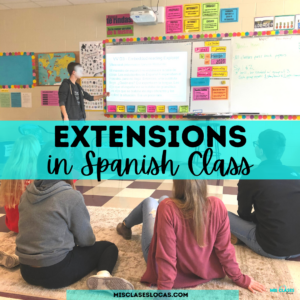
As I mentioned above, I am pretty passionate about not only accommodating but providing opportunities for extensions and accelerated growth. There is a lot of hate out there for providing talented and gifted education. I have seen this often stem from those who are not given these enrichment opportunities. Enrichment is often reserved for predominantly white suburban schools. I know first hand there is inequity. I have taught in rural districts that do nothing to advance, challenge, or extend the learning of talented bright minds. (In the picture above a very talented Spanish 4 senior took it upon himself to help teach the class and lead an activity. This was not planned, but something the student volunteered to do).
Enrichment does not mean giving bright students more busy work! If a student finishes quickly, do NOT give them another low-level worksheet to complete. Instead, provide a choice of a variety of extension activities to enhance Spanish acquisition. These choice activities do not need to take a lot of teacher effort. If you have 1:1 devices, many technology tools can be a great way to differentiate instruction in Spanish classes.
On my daily slides or the board, I always wrote what students were to do once they were finished. Ex. Once done, turn in the activity on Google Classroom & either free read or do Duolingo. (Plus they were always encouraged to catch up on missing work as well).
Extension Ideas for Spanish Class Using Technology
- Duolingo practice
- LyricsTraining (free cloze songs listening practice)
- Choice Flangoo or Garbanzo (paid subscriptions with reading activities)
- Choice Sr. Wooly (paid subscription with song listening activities)
- Study Vocab on Quizlet or individual Blooket Game
- use any of these Websites for Spanish Teachers
- Investigate the country/culture being studied & look for authentic resources
- Ideas from Choice work (but in class, not as homework)
Extension Ideas for Spanish Class – no tech needed
- Free Reading from my Spanish classroom library
- Chat in Spanish with a partner – draw & use Question Cards if needed
- Play Verba, Scrabble, or other card or board games in Spanish
- Free Write in Spanish or do a practice Writing activity
- Create something in Spanish – comic, vocab notecards, a bulletin board for class, etc
- Create something related to Spanish culture
- Work towards a larger class goal (Ex. plan to teach Elementary Spanish Lessons)
Assessments and Grading
For many years my last school fully embraced Standard Based Grading. This was helpful since reassessment was encouraged, as the goal was moving up in proficiency levels. Most of my speaking and writing assessments were open-ended with a certain proficiency goal. This gave options for students to show what they learned and understood. Final Assessments for Spanish class & How to Assess a Novel in Spanish class give more information on how I assessed.

Use Conversation Cards for Speaking Assessments
One big differentiation tip I have for speaking assessments is to use differentiated Question cards for assessments. In addition, you can see in the above picture I wrote down explicit expectations for students to see, including helpful phrases. For example on a novice partner speaking assessment:
- Accommodation – Students can use the premade orange question cards with the most basic level questions in Spanish & answer in single words or short phrases.
- Standard – Students can use the white premade question cards with more advanced open-ended questions in Spanish to answer in sentences.
- Extension – Students have the choice to create their questions based on the topic and ask those instead of using premade questions & expand their answers in sentences with and, but, with, and also.

Conclusions
Differentiation is an important part of any World Language classroom. Differentiated instruction is especially so when teaching Spanish classes because there are often multiple proficiency levels among students due to varying backgrounds and experiences with the language itself. By setting clear expectations, providing visual aids, grouping providing modifications/accommodations, as well as extensions, you can help reach all learners. With these tips in mind, you’ll be able to create a more inclusive learning environment that focuses on helping each student reach his or her individual goals.
Don’t Miss PD with me about Differentiation!
On March 25th, 2025 I will be doing a masterclass all about Differentiation to support all learners.
Learn more in the new Neurodiversity Summit Blog Post.

While the conference is free to sign up for, if you choose to upgrade, I will make a small commission. Affiliates & Disclaimer
